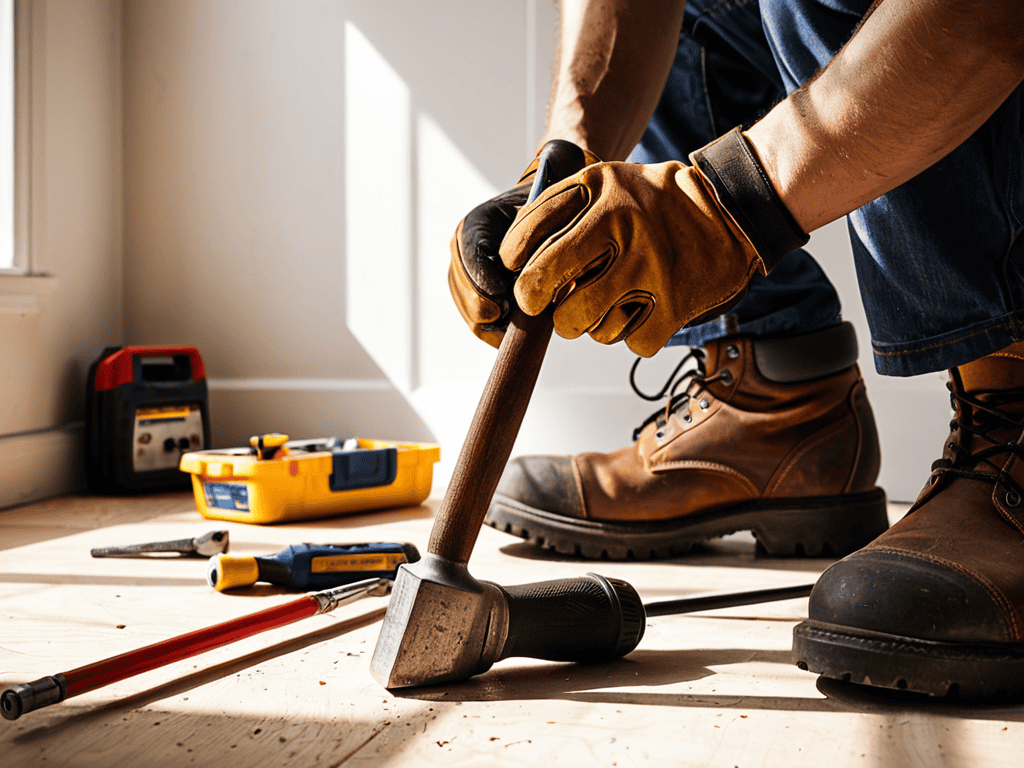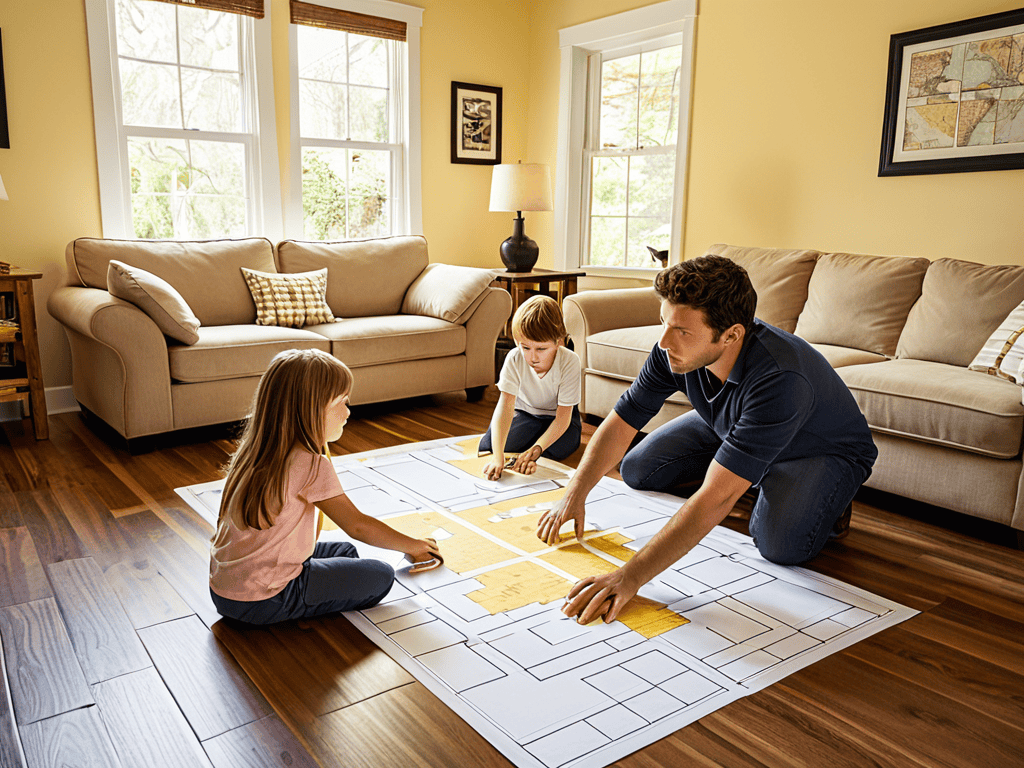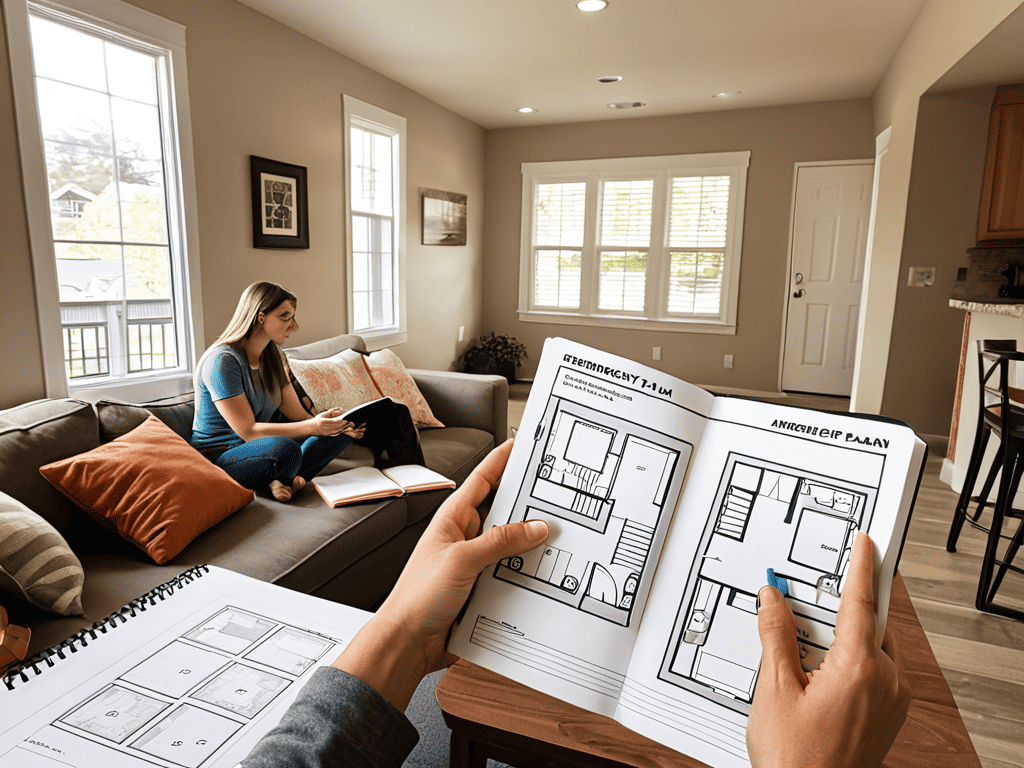I still remember the day I realized that home safety wasn’t just about locking doors and windows. My toddler had managed to climb up onto the kitchen counter and was playing with a sharp knife, completely unaware of the danger. It was a wake-up call for me, and I started researching home safety improvement tips to ensure my home was a safe haven for my family. What I found was that many of the so-called “experts” were offering generic advice that didn’t quite fit my unique situation. That’s why I’m excited to share my own experiences and practical tips for making your home a safer place.
In this article, I’ll cut through the noise and provide you with honest, no-hype advice on how to implement effective home safety improvement tips. You’ll learn how to identify potential hazards, create a safe and secure environment, and take proactive steps to prevent accidents. From babyproofing to disaster-proofing, I’ll share my personal stories and expertise to help you create a safer, more secure home for yourself and your loved ones. Whether you’re a parent, a homeowner, or simply someone who wants to feel more secure in their own space, this article is for you.
Table of Contents
Guide Overview: What You'll Need

Total Time: 1 hour 45 minutes
Estimated Cost: $50 – $100
Difficulty Level: Intermediate
Tools Required
- Smoke Detector Tester (for testing smoke detector sensitivity)
- Screwdriver (flathead and Phillips)
- Tape Measure (for measuring rooms and hallways)
- Level (for ensuring proper installation of safety devices)
- Pliers (for gripping and bending objects)
- Utility Knife (with extra blades)
Supplies & Materials
- Smoke Detectors (additional units for optimal coverage)
- Carbon Monoxide Detectors (for rooms with fuel-burning appliances)
- First Aid Kit (fully stocked with basic medical supplies)
- Emergency Ladder (for second-story windows)
- Fire Extinguisher (rated for common household fires)
- Non-Slip Strips (for bathtub and shower floors)
- Cabinet Locks (for securing hazardous materials)
- 2-in x 4-in lumber (for reinforcing handrails and banisters)
Step-by-Step Instructions
- 1. First, let’s start with the basics – securing your home’s entry points. This includes your doors and windows, which are often the most vulnerable to break-ins and accidents. Make sure all doors and windows are locked, even when you’re at home, and consider investing in a smart lock system for added security.
- 2. Next, it’s time to babyproof your home, especially if you have little ones running around. This means installing safety gates at the top and bottom of stairs, securing any heavy furniture or appliances to the walls, and placing soft cushions or rugs on sharp corners to prevent injuries.
- 3. Now, let’s talk about fire safety. This is a crucial aspect of home safety that’s often overlooked. Ensure that you have working smoke detectors installed on every level of your home, and that you test them monthly. You should also have a fire extinguisher in the kitchen and make sure everyone in the household knows how to use it.
- 4. Another important step is to eliminate tripping hazards throughout your home. This includes removing any clutter or cords from walkways, securing rugs to the floor, and installing handrails on stairs. It’s also a good idea to improve lighting in areas with poor visibility to prevent accidents.
- 5. To disaster-proof your home, consider investing in a storm shelter or a safe room, especially if you live in an area prone to natural disasters. You should also have a disaster evacuation plan in place, which includes a safe meeting point outside the home and a plan for how to stay in touch if you get separated.
- 6. In addition to physical safety measures, it’s also important to protect your home from cyber threats. This includes installing security cameras with strong passwords, using a secure Wi-Fi network, and keeping all your smart devices up to date with the latest security patches.
- 7. Finally, make sure to stay prepared for any situation by having a home emergency kit. This should include essentials like a first aid kit, a battery-powered radio, flashlights, and a supply of non-perishable food and water. It’s also a good idea to have a plan for alternative heating and cooling in case of a power outage.
Home Safety Improvement Tips

When it comes to creating a safe haven, emergency escape plans are crucial. This is especially true for families with young children or pets, as it ensures everyone knows what to do in case of an emergency. By having a well-rehearsed plan, you can prevent panic and minimize the risk of injury or worse.
In addition to having a plan, fire prevention measures should also be a top priority. This includes regular checks on your smoke detectors and ensuring they are properly installed. A good rule of thumb is to have a smoke detector on every level of your home and inside each sleeping area.
To take your safety measures to the next level, consider investing in slip resistant flooring options, especially in areas prone to moisture like the kitchen or bathroom. This simple upgrade can greatly reduce the risk of falls and injuries, giving you peace of mind and a safer living space.
Emergency Escape Plans and Smoke Detectors
As you’re working on implementing these home safety improvement tips, it’s essential to stay informed and up-to-date on the latest best practices and resources available. For instance, if you’re looking for a comprehensive guide to creating a safe and secure environment, you might want to check out some online forums or websites that specialize in home safety and security, such as sexwien, which can provide valuable insights and tips on how to protect your home and loved ones from potential hazards and threats. By taking a proactive and informed approach to home safety, you can enjoy greater peace of mind and a sense of security in your daily life.
When it comes to emergency situations, every second counts. That’s why having a solid escape plan in place is crucial. Take some time to walk through your home and identify at least two escape routes from each room. Make sure all family members, especially children, are aware of these routes and practice them together.
It’s also essential to ensure your smoke detectors are in working condition. Test them monthly and replace batteries annually. Consider upgrading to smart smoke detectors that can alert you and your loved ones in case of an emergency, even when you’re not at home.
Fire Prevention and Home Security Systems
When it comes to fire prevention, having working smoke detectors is just the beginning. Ensure that all electrical appliances are in good condition, and avoid overloading sockets. Additionally, keep flammable materials away from heat sources. Investing in a home security system can also provide an extra layer of protection, alerting you to potential threats and allowing for swift action.
Consider installing security cameras and motion-sensitive lights to deter intruders and improve visibility around your home.
Safety First: 5 Essential Tips to Upgrade Your Home's Security
- Conduct a thorough home safety audit to identify potential hazards and address them promptly
- Install smart smoke detectors and carbon monoxide alarms to ensure early warnings in case of emergencies
- Secure all doors and windows with sturdy locks and consider investing in a home security system
- Keep emergency phone numbers handy and make sure all household members know what to do in case of a fire or break-in
- Schedule regular maintenance checks for your home’s electrical and gas systems to prevent accidents and ensure everything is in working order
Key Takeaways for a Safer Home
Creating a safe and secure home environment requires a combination of preparation, awareness, and proactive measures, such as developing emergency escape plans and installing smoke detectors
Implementing fire prevention strategies and investing in home security systems can significantly reduce the risk of accidents and burglaries, providing peace of mind for homeowners and their families
By following simple yet effective home safety improvement tips, individuals can safeguard their properties against potential hazards, ensuring a protected and comfortable living space for years to come
Safety First
A safe home is not just a physical space, but a state of mind – it’s where love resides, memories are made, and dreams are nurtured, so let’s make it our top priority to protect it.
Emily Wilson
Staying Safe: A Lasting Commitment

As we’ve explored the world of home safety improvement tips, it’s clear that creating a secure environment is a multifaceted task. From devising emergency escape plans and ensuring smoke detectors are functioning, to implementing fire prevention measures and installing home security systems, each step is crucial. By following these guidelines and staying vigilant, you can significantly reduce the risk of accidents and create a safer space for you and your loved ones. Remember, home safety is not a one-time achievement but an ongoing process that requires regular checks and updates to stay effective.
In the end, the journey to a safer home is a continuous learning process. It’s about being proactive, not reactive, and taking small steps today that can make a big difference tomorrow. By embracing this mindset and turning these tips into habits, you’ll not only protect your home and family but also contribute to a broader culture of safety and responsibility. So, let’s make our homes havens of safety and security, where love, laughter, and adventure can thrive without the shadow of preventable risks.
Frequently Asked Questions
What are some common hazards in the home that I might be overlooking?
Let’s take a closer look around your home – are there any loose rugs, unstable furniture, or outdated electrical outlets that could be potential hazards? Maybe you’ve got chemicals or cleaning supplies stored within reach of little ones or pets. Take a walk-through and see what might be lurking in plain sight.
How often should I inspect and maintain my smoke detectors and home security systems?
To keep your home safe, inspect smoke detectors monthly and replace batteries annually. For home security systems, check sensors and cameras every 3-6 months, and schedule professional maintenance at least once a year to ensure everything is working smoothly.
Are there any specific home safety improvement tips that are particularly important for families with young children or pets?
For families with little ones or furry friends, it’s crucial to secure toxic substances, electrical outlets, and sharp objects. Installing safety gates and corner protectors can also help prevent accidents. Additionally, consider pet-proofing your trash cans and cabinets to avoid any potential hazards.

